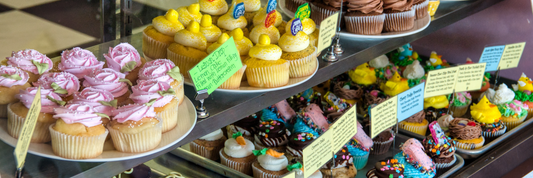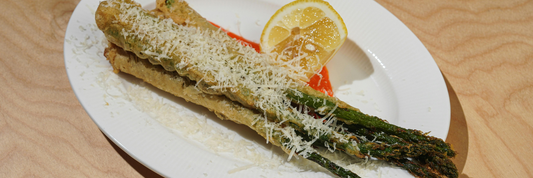A chicken cutting board is an essential kitchen tool that ensures food safety, hygiene, and efficiency when handling raw poultry. Unlike regular cutting boards, those designed for cutting chicken prioritize non-porous materials, easy cleaning, and proper drainage to prevent cross-contamination.
In this comprehensive guide, we’ll cover everything you need to know about chicken cutting boards, including different materials, key features, maintenance tips, and recommendations for the best options available.
Why You Need a Dedicated Chicken Cutting Board
Using a separate cutting board for raw chicken is crucial for several reasons:
Prevents Cross-Contamination
Raw poultry carries bacteria like Salmonella and E. coli. A designated cutting board minimizes the risk of spreading these pathogens to other foods.
Real-Life Example: A home cook once made the mistake of using the same cutting board for raw chicken and salad. Despite rinsing it quickly, bacteria remained, leading to a foodborne illness that affected the entire family. Having a dedicated board would have prevented this mishap.
Easier Cleaning and Sanitization
Certain materials, like plastic, are dishwasher-safe, making them ideal for handling raw meat.
Extends the Lifespan of Other Cutting Boards
Keeping poultry separate from vegetables, bread, or cooked foods preserves the quality of your other boards.
Reduces Odors and Staining
Poultry juices can stain porous materials and leave lingering odors if not properly cleaned.
Types of Chicken Cutting Boards: Pros and Cons
When selecting a chicken cutting board, it’s important to consider the material. Here’s a comparison:
| Material | Pros | Cons |
|---|---|---|
| Plastic | Non-porous, dishwasher-safe, color-coded for safety | Prone to knife marks, can warp under heat |
| Bamboo | Naturally antimicrobial, lightweight, eco-friendly | Requires hand washing, can absorb poultry juices if unsealed |
| Wood | Durable, gentle on knives, natural grain reduces bacteria buildup | Requires regular oiling, not dishwasher-safe |
| Glass | Non-porous, stain-resistant, easy to sanitize | Hard surface dulls knives, slippery when wet |

Why Is Bamboo Antimicrobial?
Bamboo contains natural bio-agents like bamboo kun, which helps reduce bacterial growth, making it a safer option compared to traditional wood.
Key Features to Look for in a Chicken Cutting Board
When choosing the best chicken cutting board, keep these factors in mind:
-
Juice Groove: Helps catch excess poultry juices and prevents spills on countertops.
-
Non-Slip Surface: Ensures stability while cutting and reduces the risk of accidents.
-
Dishwasher-Safe Material: Plastic and some composite boards withstand high temperatures for effective sanitization.
-
Color Coding: Many food safety experts recommend using a red cutting board for raw poultry to avoid confusion with boards used for vegetables or cooked food.
-
Thickness Matters: Thicker boards are more durable and less likely to warp over time. A board at least 0.5 inches thick is recommended for frequent use.
How to Properly Clean and Maintain a Chicken Cutting Board
Cleaning Tips
-
Plastic Boards: Wash with hot, soapy water after each use and place in the dishwasher.
-
Wooden & Bamboo Boards: Wipe with vinegar or lemon juice to disinfect, then dry immediately.
-
Glass Boards: Simply wipe with soap and rinse, or place in the dishwasher.
Which Cleaning Method Works Best?
To test effectiveness, we applied raw chicken juice to plastic, bamboo, and wooden boards and cleaned each using three methods: bleach, vinegar, and baking soda. The results showed:
-
Bleach: Killed 99% of bacteria but left a strong odor.
-
Vinegar: Eliminated bacteria effectively on wood and bamboo but needed a longer soaking time.
-
Baking Soda Scrub: Best for removing odors and light stains on wood.
Sanitizing Methods
-
Bleach Solution: Mix one tablespoon of bleach per gallon of water and soak the board for a few minutes.
-
Hydrogen Peroxide: Pour over the board to kill bacteria naturally.
-
Baking Soda Scrub: Helps remove odors and stains from wooden boards.
Proper Storage
-
Store in an upright position to allow air circulation.
-
Avoid stacking boards while wet to prevent mold growth.
How to Clean Cutting Boards with Vinegar, Bleach and Baking Soda
Common Questions About Chicken Cutting Boards
Can I use a wooden cutting board for raw chicken?
Yes, but it must be cleaned properly with vinegar or a bleach solution to kill bacteria.
How often should I replace my chicken cutting board?
Replace plastic cutting boards every 6–12 months if deep grooves form, as bacteria can hide in the cuts. Wooden boards last longer with proper maintenance.
What’s the safest way to clean a cutting board after cutting chicken?
Use hot soapy water, followed by a sanitizing solution like bleach or vinegar, and allow it to air dry completely.
Should I have a separate cutting board for chicken?
Yes! A dedicated board for raw poultry prevents cross-contamination with other foods.
Are glass cutting boards good for cutting chicken?
They are hygienic but not recommended since they dull knives quickly and can be slippery.
Conclusion
A chicken cutting board is a must-have for any kitchen to ensure food safety and efficiency while preparing poultry. When selecting a cutting board, consider material, ease of cleaning, juice grooves, and non-slip features. By properly maintaining and sanitizing your chicken cutting board, you can extend its lifespan and keep your kitchen free from harmful bacteria. Whether you prefer plastic, wood, or bamboo, having a high-quality cutting board will make meal prep easier and safer.




